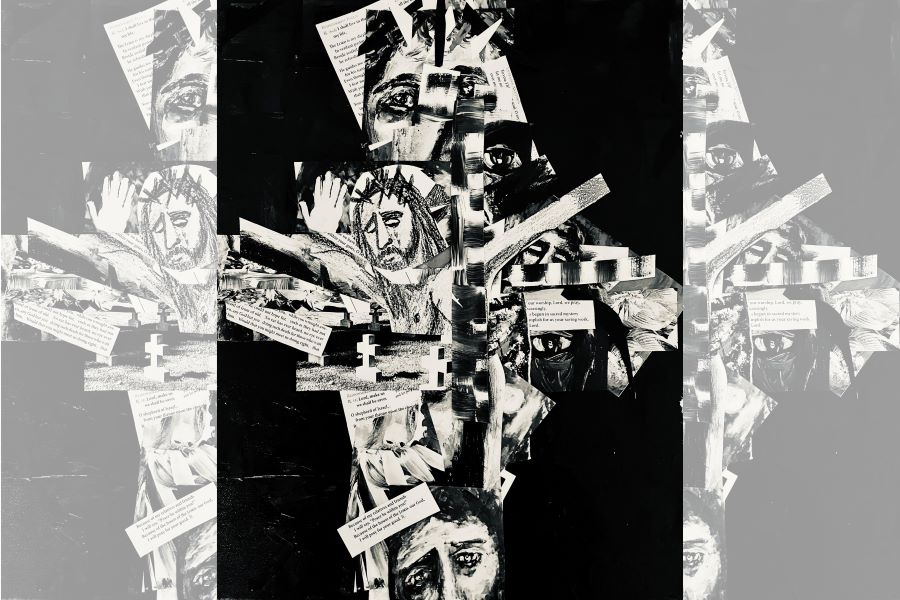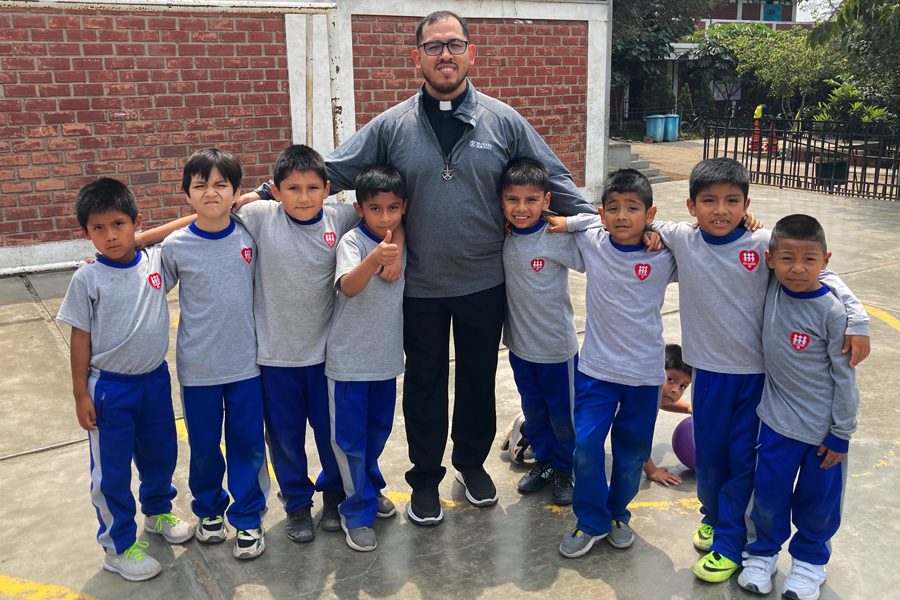The Universal Church celebrates the Solemnity of the Exaltation of the Holy Cross every year on September 14. Fr. Basil Moreau, the founder of the Congregation of Holy Cross, left us an incredible legacy in the motto, “The Cross is Our Only Hope.” This inheritance is not just in words but in how we live our religious and spiritual lives. The Cross of Christ reminds us daily that death gives way to life, and that we shall be united with God after our time on earth.
The Cross of Christ is the essence of Christianity. The full dimensions of Christ’s passion, death, and resurrection are fundamental in every image of the Cross. The Cross in human terms is a weight on our shoulders, a profound suffering; the Cross we inherit as priests and brothers becomes a touchstone in our search for healing and redemption. As religious, the Cross is a reminder of our common vulnerability and our shared search for God’s love. It does not fade in the heat of our anger or get washed away in cycles of violence. The Cross of Christ is a radical way of life and a prophetic posture of love.
As I reflect on The Exaltation of the Holy Cross, I am captivated with the image of the Cross that remains in the people and places of our past ministries. The Cross of Christ we leave behind is a way to trace our own past, to be grateful for the people and places of ministry. The Cross becomes the moment of engagement with people, a touchpoint to reflect on our history and the faith passed down to a new generation. Moments marked in the name of the Father, the Son, and the Holy Spirit are too many to count over a lifetime, but so beautiful to consider.
Some Crosses we leave behind are drenched with water and covered in oil. Crosses signed in the ritual moments of baptism reveal God’s covenant with us, helping us all feel we belong to Christ. The Crosses left behind on tender skin become the source of adult vocations of prayer and service within the Church. Just a few months ago, a woman approached me after Mass and told me I had baptized her daughter, my first baptism after I was ordained a priest forty-one years ago. The Sign of the Cross I left behind in the baptismal font did not dry up but flourished in a daughter who now is living her adult faith with generosity and grace.
I have taught children about Christ’s Cross to give them something to cleave to when life gets really tough. I believe the Cross is embedded in our young, to be revealed in a time to come when they most need to cling to something real. Some Crosses are marked on youthful foreheads by a bishop during the Sacrament of Confirmation. I pray that those Crosses drenched in sacred chrism will continue to show our children they belong to Christ and the Church no matter what happens in later years.
Sometimes the Crosses I remember are quietly covered with tears. Those Crosses of ritual absolution in discreet confessionals reflect the penitents’ hearts, and the gesture of the Cross becomes a source of hope for those hearts when sin has baffled them. I long for salvation for sinners when the ugliness of guilt clings and shame needs to be wiped away. The Cross often needs time to heal people, to grow, and to flower in lives that are bruised. Good news is not always immediately felt.
Some Crosses tell stories of deep love. When a parent holds a child in an emergency room, the Cross of suffering reveals the unconditional tenderness of family life, and I am humbled in the presence of such lasting and beautiful love. I remember viewing the Cross of absolute fidelity when I sat with a mother in the middle of the night as she held her newborn who had just died. Tears flow from the Crosses we bear, but hope comes in the morning light of God’s long-enduring love.
There are Crosses we may leave behind in the middle of homeless camps or sobriety circles. I have never met more authentic souls than those who bear the brunt of no shelter, living under bridges or in deep woods, and whose weathered skin and often fiery eyes tell of lives that have never been easy. When such survivors walk down a church aisle to receive the Eucharist, I know the Cross rests heavily upon them. These are Crosses I remember because I could do nothing to change those situations or make the pain stop.
Every Cross we leave behind is a source of mutual learning and surrender. I continue to ascertain the true meaning of the Cross from vulnerable people, in whom the Cross may be splintered from years of abuse, anguish, and dread. My encounters with people bearing such pain teach me the depth and beauty of the human soul. I am privileged to know those who bear such tender marks of faith from such deep wounds. These moments of human suffering remain raw for so many, yet God’s mercy becomes a healing grace no matter the depth of their anguish.
The Crosses we leave behind are mutual, often when we least expect to find them. Those Crosses show me how to say I am sorry when confronted with evidence of my wrongdoing—when I have hurt someone, when I step on toes, when I wield power over others, a Cross comes into my life from the challenging words of those I have wronged. The Cross of Christ reveals hope when other people hold it up to me, as with a mirror, challenging me to reveal my vulnerability. It is then I surrender to new life that Christ has for me. God opens my heart and offers me an opportunity to grow in faith and in my own personhood.
We ache to be known by God. When we enter a church before Mass, we dip our fingers into holy water and mark our bodies with the Sign of Salvation. Within the Mass, we mark our minds, lips, and hearts with the Sign of the Cross before we hear the gospel, a gesture to catch our attention when our salvation story is ritually proclaimed. The Cross on our bodies reminds us that we have shown up to God, that we count, that we have surrendered to God’s story of mercy, making it our own.
The Cross of Christ is the empowerment of grace when life is terrifying, forgiveness when sin multiplies. The Cross lives in the people we serve; it is carried, endured, and resides in our hearts to keep evil away. The Cross is redemption when we take our last breath and solace for those who grieve.
As Holy Cross religious, we mark our years under the Cross of Christ Jesus, who offered us his life, death, and resurrection. The Cross of Christ we sign on the bodies and lives of people becomes a glorious, enduring moment of faith. We carry all of those Cross marks deeply in our memories, indelible encounters that have healed and changed us. The gesture of the Cross enlivens the mission of the Church, heralding love and moving us away from fear, in the name of the Father, the Son, and the Holy Spirit.
The Cross of Christ is our only hope.
_____________________________________________________________________________________
About:
Rev. Ronald Patrick Raab, C.S.C., serves as religious superior of Holy Cross House, our retirement and medical facility at Notre Dame, Indiana. He is an award-winning author, blogger, and visual artist. Learn more at ronaldraab.com.
Artwork:
Fr. Ron created this collage for this article. This image invites us to reflect on the many crosses that form our lives and ministry. Fr. Ron’s artwork has been published in parishes and dioceses around the world.
Posted August 2024




